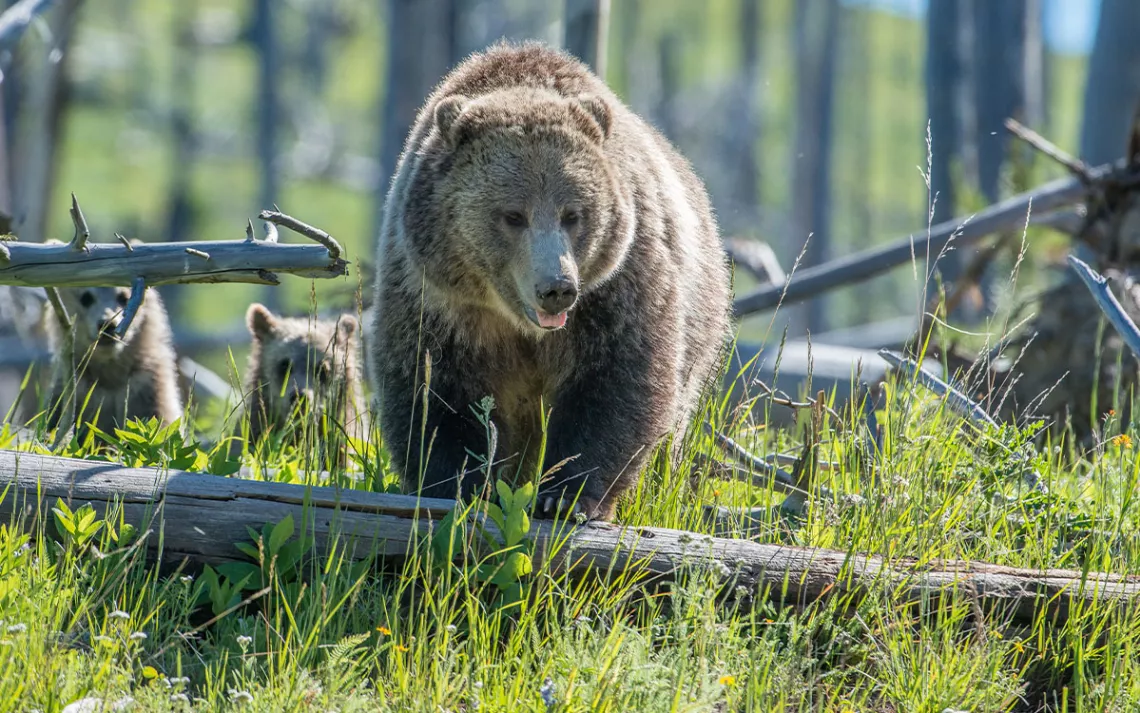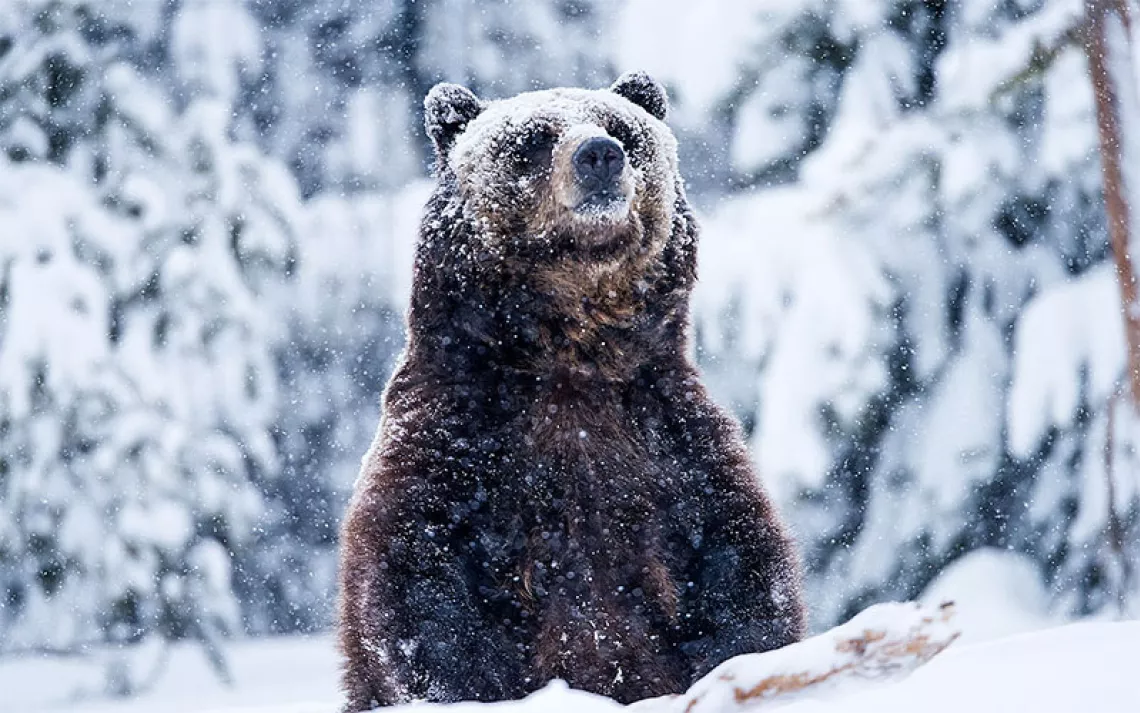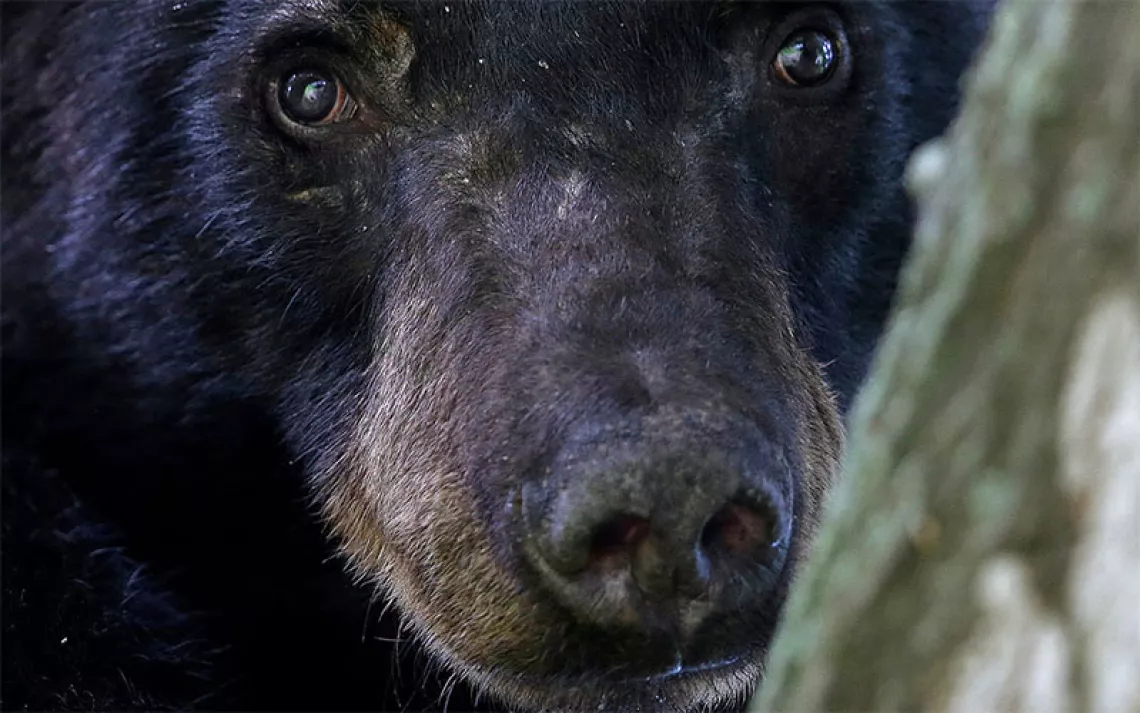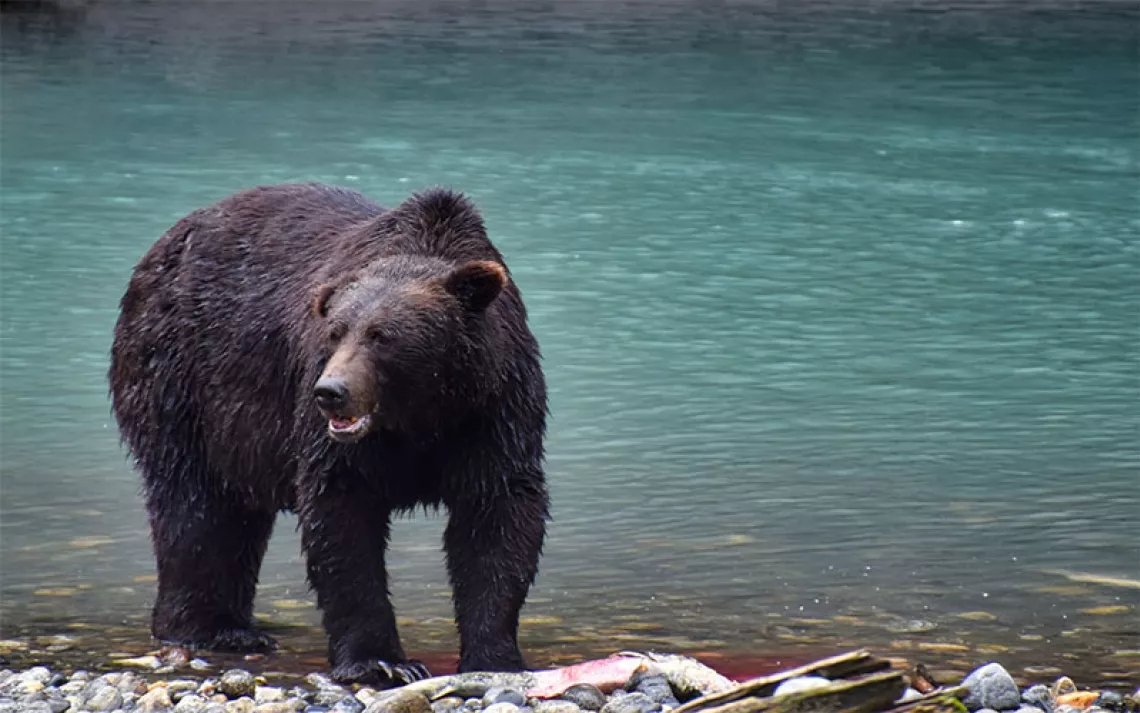It’s Time to Bring Grizzly Bears Back to the North Cascades
Experience shows that grizzly-human coexistence is possible

Photo by Jillian Cooper/iStock
This article was originally published by Cascadia Daily News.
Every autumn, I take a solo backpacking trip in North Cascades National Park, a busman’s holiday to watch the larch turn. On my fall pilgrimage last month, I was headed south on the Pacific Crest Trail from Rainy Pass when I paused at the junction with the North Fork Trail, where I was badly tempted to make a detour toward the slab-faced peaks upstream.
But the trail was officially closed to campers. Bear activity, the Park Service warned.
Black bear, of course. There may be a campsite on the North Fork Trail called “Grizzly Creek,” but there hasn’t been a brown bear making a home in the North Cascades since 1967, when the last one was shot dead on Fisher Creek. Since then, the grizzly has been a ghost on the landscape. Every once in a while, someone thinks they’ve spotted one, but there’s been only a single confirmed sighting in more than half a century.
Now, after decades of delay, the federal government is seriously considering bringing the grizzly back. The National Park Service and US Fish and Wildlife Service are asking for citizens to submit comments on their preferred strategy for proposed reintroduction by Monday, November 13. I’m solidly in the “yes” camp, and here are some reasons why you should be too.
For starters, grizzly bears are good for the land. The big omnivores serve as ecological engineers: As they tear up the ground looking for tubers and rodents and termites, they aerate the soil, spurring biological activity. The bears’ rooting can help keep conifers in check, forming and sustaining alpine and subalpine meadows that other critters benefit from. Bears are also great scavengers, adept at spreading the nutrients of a deer or moose carcass throughout the forest. They are unmatched seed dispersers—have you seen bear scat come late summer?
There are cultural reasons to bring back the grizzly. There’s always been a kinship between people and bears—what with that ursine posture that’s so eerily human. Here in our corner of the world, the cultural connections go back to what Indigenous cultures call “time immemorial.” In the oral histories of the Upper Skagit Tribe, the bear is sometimes depicted as a cantankerous, if credulous, gambler. There’s an ecological insight in the old stories: An omnivore knows that to live is to take chances. By bringing grizzlies back to the North Cascades, we can reanimate the land with such ancient meanings.
There’s also a moral case to be made for returning the brown bear to the North Cascades. Reintroduction would be a form of ecological justice. The bears were here first, after all. In the last century or so, we humans have taken up most of the grizzlies’ old territory—especially the river valleys and shorelines, the richest places for a bear to live. The least we can do is to give a little bit of space back.
Let’s be honest: Sharing space with Ursus arctos horribilis ain’t always going to be easy. Climbers, backpackers, and other wilderness adventurers will face new risks. But that’s a choice for them to make, and any potential hazard will be more than compensated for by getting to experience a landscape with apex predators—what the poet Gary Snyder once called ecology “on the level where it counts.”
It’s true that the annoyances of living near bears will fall heavier on some communities than on others—a fact that makes coexistence feel unfair for some mountain town residents. There’s a good chance that eventually a grizzly will break into someone’s chicken coop or bust into their horse feed, though negative encounters are likely to be rare.
But coexistence is possible. We know this from the farmers, ranchers, country folk, and backcountry recreationists in Montana and Idaho, Alberta and British Columbia, who have been living among grizzlies for decades. If people there can manage to coexist with grizzly bears, we can too.
And, truly, it’s not all that many animals we’re talking about. The Feds’ proposal calls for relocating five to seven bears per year into the North Cascades for up to 10 years. Due to their slow reproduction, there will be around 200 bears in the region in … a century. Those grizzlies will be spread over 10,000 square miles of rugged wildlands, one of the last, best places in the Lower 48 for such burly beasts. If not here in Cascadia, then where?
In her book, Eight Bears, environmental journalist Gloria Dickie reminds us that the most well-known bear myth is the Goldilocks tale: a little girl, trashing the home of a family of bears. We’ve done enough trashing. It’s time to attempt to make things right by doing some repair work. Let’s welcome the grizzly back home.
Public comments about the proposed grizzly bear reintroduction can be filed electronically at https://www.regulations.gov/document/FWS-R1-ES-2023-0074-0001 or sent to:
Division of Policy, Performance, and Management Programs
US Fish and Wildlife Service
MS: PRB/3W
5275 Leesburg Pike
Falls Church, VA 22041–3803
 The Magazine of The Sierra Club
The Magazine of The Sierra Club



